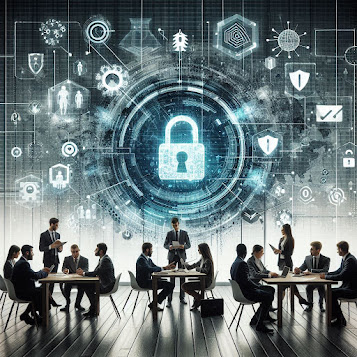The Invisible Battlefield: Why Cybersecurity is No Longer Just a Tech Problem
Once upon a time, “cybersecurity” was a word mostly tossed around in IT departments, reserved for antivirus updates and annoying password policies. Fast forward to today, and it’s become a frontline issue for governments, businesses, and individuals alike. In the modern world, data is currency, and the war for it is raging in the shadows—across fiber optics and Wi-Fi signals, on every screen you touch, and inside every “smart” device you own.
But here’s the twist: Cybersecurity isn’t just a tech problem anymore. It’s a human problem. A psychological problem. A leadership problem.
Let’s explore why that matters—and what we should be doing about it.
Cybercrime Is Evolving Faster Than You Think
The days of lone hackers in hoodies are long gone. Today’s cybercriminals are organized, well-funded, and global. Some are freelancers; others work for criminal syndicates or even nation-states. They don’t just go after government secrets—they target your personal data, bank credentials, intellectual property, or even your attention.
Here’s the scary part: The tools they use are getting smarter and cheaper. Thanks to AI-powered phishing, malware-as-a-service, and automated vulnerability scanning, even amateurs can launch sophisticated attacks.
In 2024 alone, global cybercrime costs are estimated to exceed $10.5 trillion. That’s more than the GDP of every country except the U.S. and China.
The Weakest Link: Humans
Despite all the firewalls and encryption, the most common cybersecurity breaches start with something depressingly simple:
Someone clicked a link they shouldn’t have.
Phishing emails, social engineering, deepfake voice scams, even WhatsApp messages pretending to be your boss—all exploit human trust, not technical flaws.
It’s called the “human layer”, and it’s now considered the most vulnerable part of any security system. No patch can fix a gullible click. That’s why cybersecurity must evolve from being just a technical safeguard to a culture, embedded in how people think and behave.
The Rise of Cyber Hygiene (Yes, That’s a Real Term)
Just like washing your hands prevents the spread of disease, good cyber hygiene can prevent digital disasters. This means:
1. Using strong, unique passwords (and password managers)
2. Enabling two-factor authentication (2FA)
3. Keeping software updated
4. Being skeptical of unsolicited messages and links
5. Regular backups
The problem? Most people know this but don’t do it—until it’s too late. That’s where companies, schools, and even governments need to step in and make security default, not optional.
AI: Both Hero and Villain
AI is a double-edged sword in the cybersecurity arms race. On one hand, AI can detect anomalies in network traffic, flag suspicious logins, and analyze threats faster than any human. On the other hand, cybercriminals are using AI to:
- Auto-generate phishing content
- Bypass CAPTCHA systems
- Create deepfakes that impersonate CEOs, politicians, and family members
- Exploit vulnerabilities at scale
So, the future of cybersecurity will likely be AI vs AI—automated defense against automated offense. That means we need to start thinking not just about security tools, but about how those tools are built, trained, and monitored.
Beyond the Firewall: Securing Your Digital Identity
In a hyperconnected world, your digital identity is you. Every app you use, every form you fill out, every loyalty program you join—it’s all data, and most of it is stored in someone else’s hands.
When one of those hands gets hacked (which happens constantly), your information gets leaked, sold, or weaponized. If you’ve ever received a “we take your privacy seriously” email right after a data breach, you know what we mean.
Here are some modern best practices to take control:
- Check HaveIBeenPwned.com to see if your info has been leaked
- Use disposable email addresses for random signups
- Enable privacy-first browsers and extensions like Brave, uBlock Origin, or DuckDuckGo
- Limit permissions on apps and smart devices
- Because these days, privacy is security.
Cybersecurity as a Leadership Imperative
If you're a business owner or decision-maker, cybersecurity is no longer a "tech team's problem." It’s a strategic priority.
- A single breach can:
- Paralyze operations
- Destroy customer trust
- Trigger regulatory fines
- Drop your stock price
Leaders must invest in security training, not just software. They must budget for resilience, not just prevention. And most importantly, they must foster a culture where cybersecurity is everyone’s responsibility—from interns to executives.
What the Future Holds
Cybersecurity will only grow more complex in the coming years. As technologies like quantum computing, IoT, and edge AI continue to expand, so do the attack surfaces.
Here are a few future trends to keep an eye on:
- Post-quantum encryption will become critical
- Zero-trust architectures will replace perimeter-based security
- Behavioral biometrics will add a new layer of identity verification
- Cyber insurance will become as standard as health insurance
- And most likely, regulations will get stricter across the board
Final Thoughts: Cybersecurity Is Everyone’s Job Now
In this digital age, cybersecurity is no longer optional. It’s fundamental to trust, privacy, and even democracy itself. It doesn’t matter if you’re a teenager using Instagram, a freelancer working remotely, or a CEO leading a multinational—your digital life is part of a larger battlefield.
But here’s the good news: You’re not powerless. The smallest actions—choosing better passwords, being cautious with links, updating your devices—can make a world of difference.
So don’t wait for a breach to take cybersecurity seriously. Start today, and make it part of your daily life.
Because the new frontline isn't out there somewhere. It’s in your pocket. On your screen. At your fingertips.


Nice Post Man> We want more post on this topic>
ReplyDeleteHello
ReplyDelete